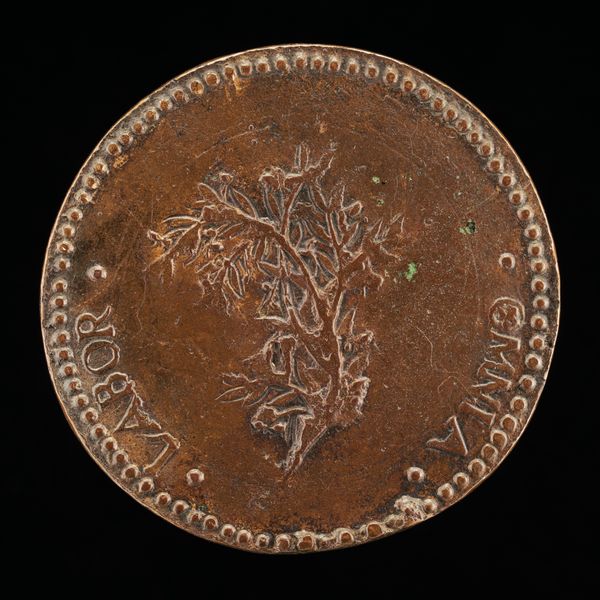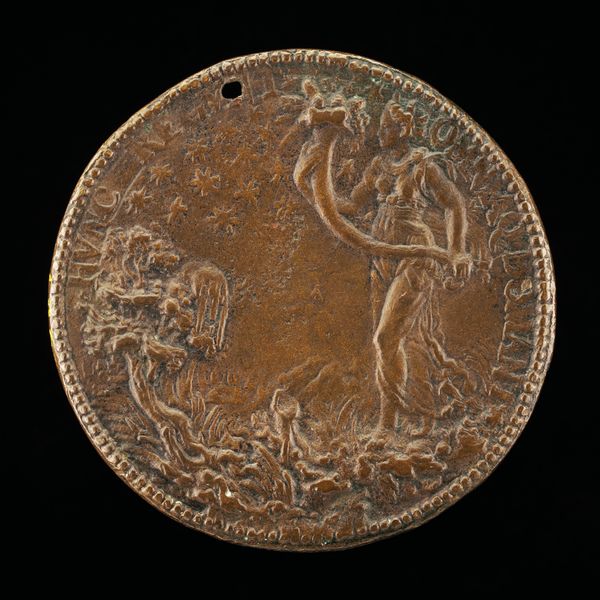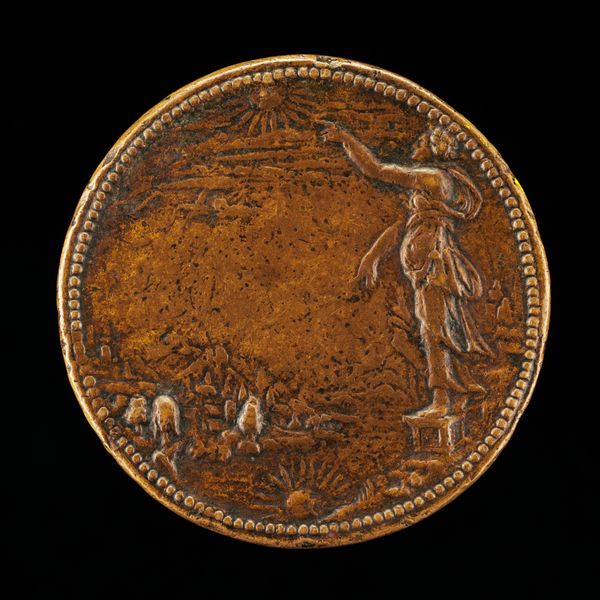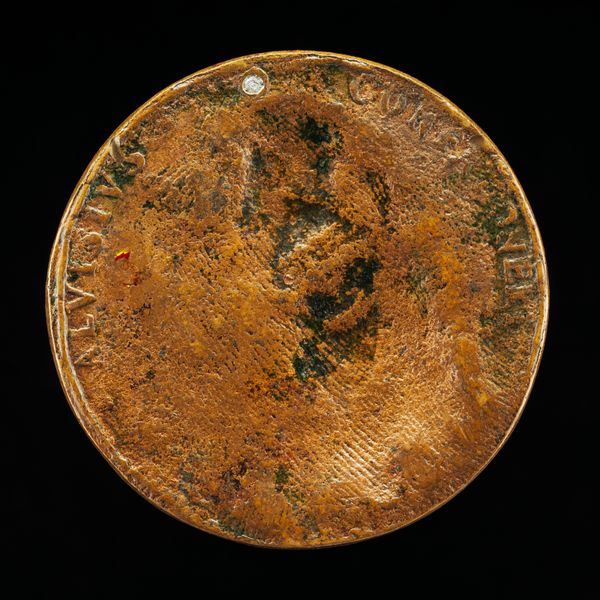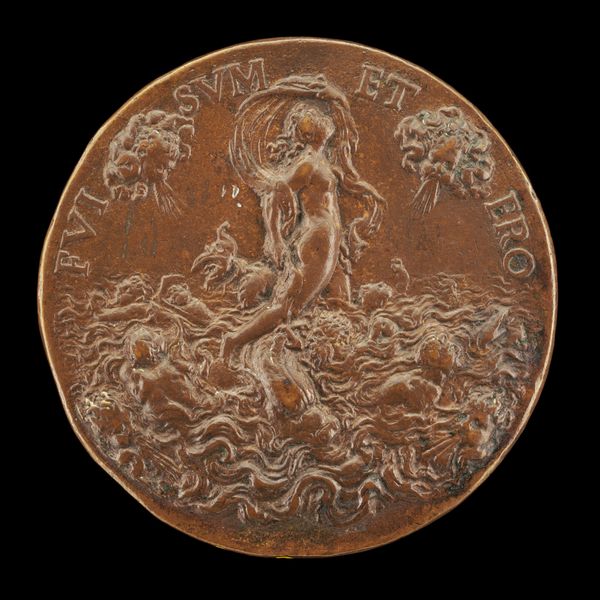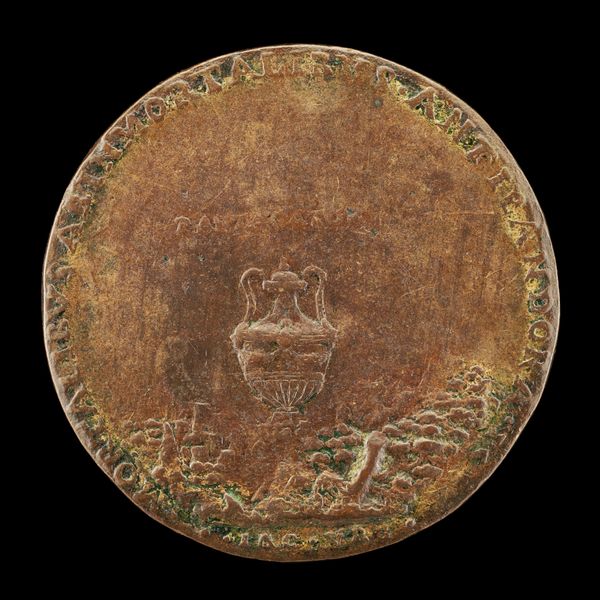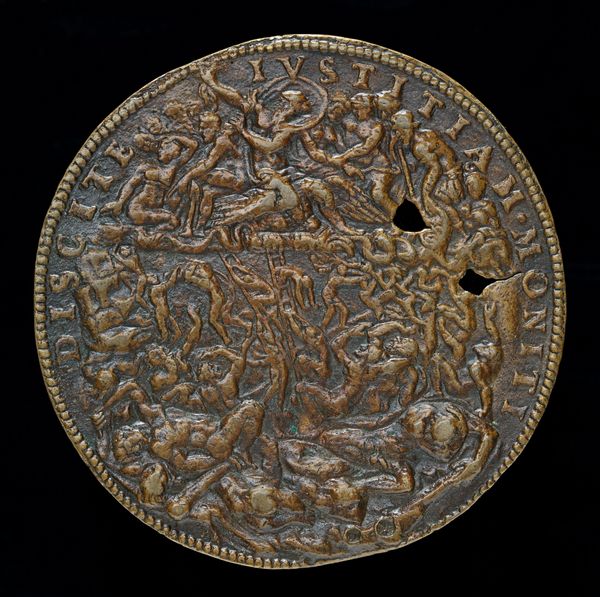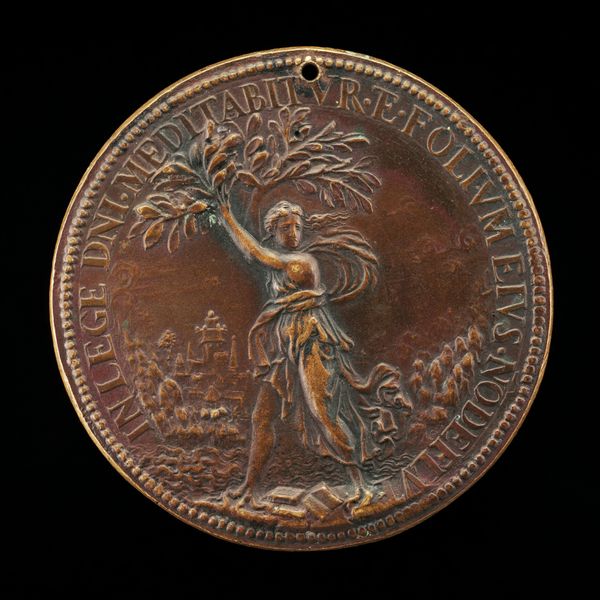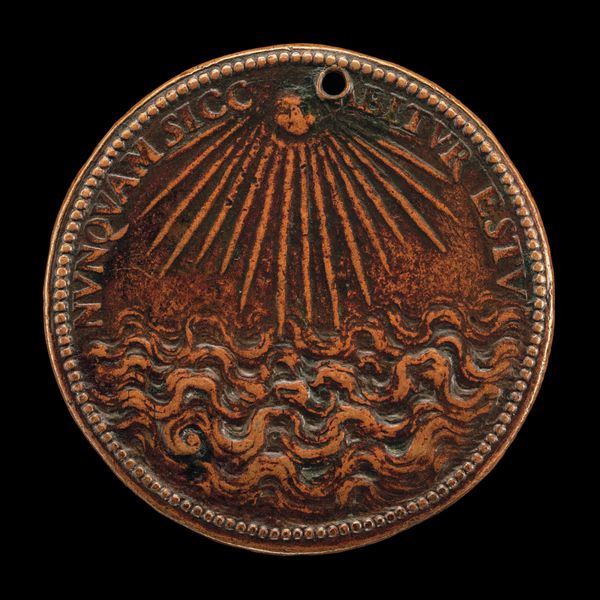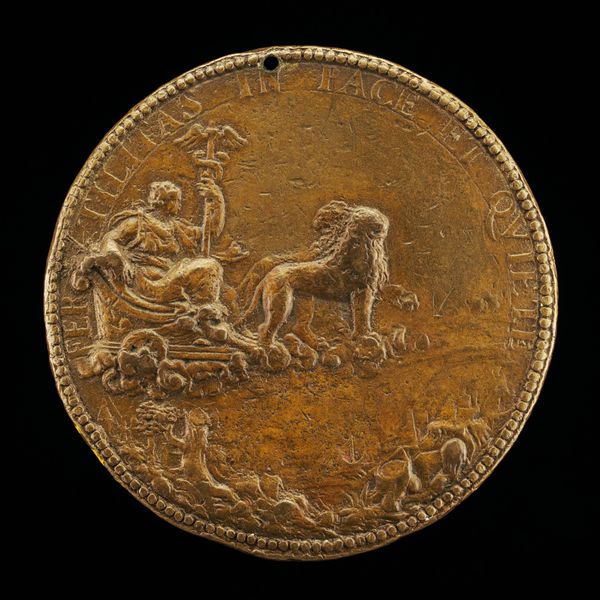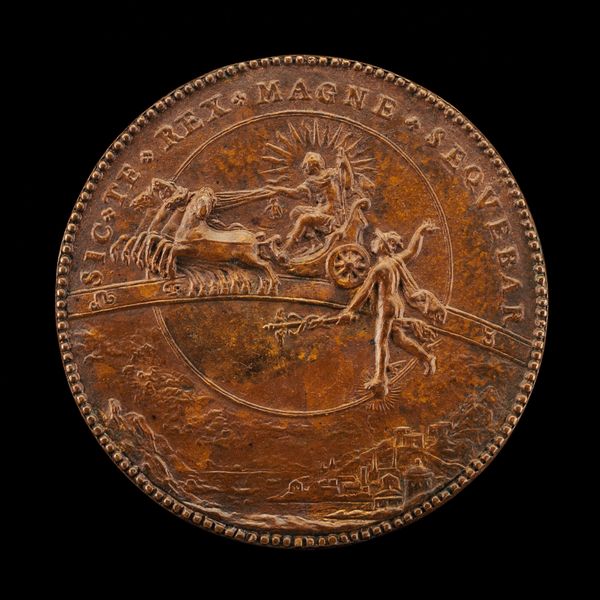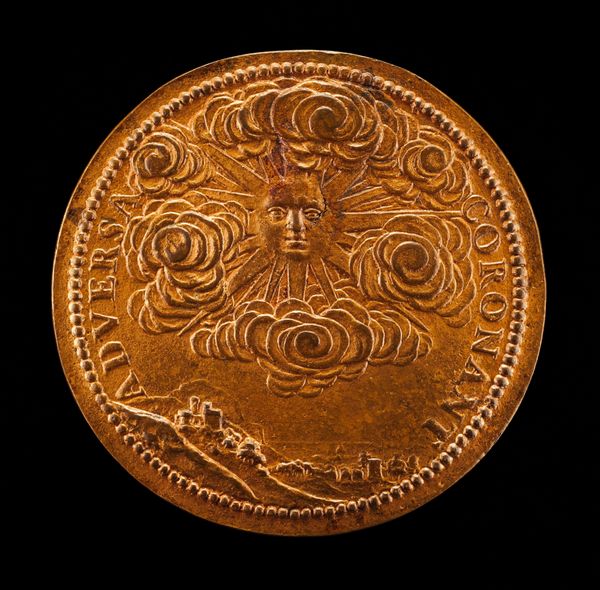![Flowering Shrub Growing through Thorns [reverse] by Pier Paolo Galeotti](/_next/image?url=https%3A%2F%2Fd2w8kbdekdi1gv.cloudfront.net%2FeyJidWNrZXQiOiAiYXJ0ZXJhLWltYWdlcy1idWNrZXQiLCAia2V5IjogImFydHdvcmtzLzYzNzhlYTIxLTEzNzEtNDVhYy1hN2U1LTdkYjg3NWI5ZDJhMS82Mzc4ZWEyMS0xMzcxLTQ1YWMtYTdlNS03ZGI4NzViOWQyYTFfZnVsbC5qcGciLCAiZWRpdHMiOiB7InJlc2l6ZSI6IHsid2lkdGgiOiAxOTIwLCAiaGVpZ2h0IjogMTkyMCwgImZpdCI6ICJpbnNpZGUifX19&w=3840&q=75)
metal, relief, bronze, sculpture
#
portrait
#
metal
#
stone
#
relief
#
bronze
#
11_renaissance
#
sculpture
#
history-painting
Dimensions: overall (diameter): 4.26 cm (1 11/16 in.) gross weight: 32.21 gr (0.071 lb.) axis: 12:00
Copyright: National Gallery of Art: CC0 1.0
Curator: Before us is a bronze relief titled "Flowering Shrub Growing through Thorns [reverse]," dating from around 1570. Editor: What strikes me immediately is the contrast. The delicate flowering shrub struggling against what looks like an aggressive, thorny base—it's a study in contrasts and constraints. Curator: Indeed. Crafted during the Renaissance, it embodies both the aesthetic and the concerns of the period. The materials—bronze—suggest not only durability but also the high cost of such object, the labour and expertise required would position it as an elite product, meant to convey status. Editor: Bronze allows for that exquisite detail, look at the inscription around the edge of the round relief. And the composition! The thorn thicket consumes almost half the piece. The visual weight speaks volumes; this flowering doesn’t come easy. The whole aesthetic reads as contained, even constrained, perhaps speaking to an emotional reality? Curator: Consider, too, the conditions under which it was produced. The social and economic realities of Renaissance workshops, the collaborative labour… even the very act of reverse carving suggests a transfer of skill, a means to translate the image for distribution. Editor: A printing matrix! A fascinating insight into the circulation of images during that time. Does the flowering shrub point to, say, a political allegory? The survival of beauty amidst turmoil, that sort of thing? Curator: Perhaps. Though without deeper textual context, interpreting the 'meaning' too literally would be speculative. However, reflecting on it materially, it gives us direct access to production methods, market influences, the lives of both the artist and likely a patron. Editor: Quite. Thinking purely in formal terms, the rough texture of the thorns against the smooth leaves gives it that palpable tension—struggle made manifest. Even today it speaks poignantly to resilience. Curator: Yes, an exploration through both process and image. We observe not only what is presented, but how such presentations occurred during the Renaissance and the economies sustaining them. Editor: Absolutely. From the semiotics of the image to the actual metal it's wrought from. Every element enriches our encounter.
Comments
No comments
Be the first to comment and join the conversation on the ultimate creative platform.
